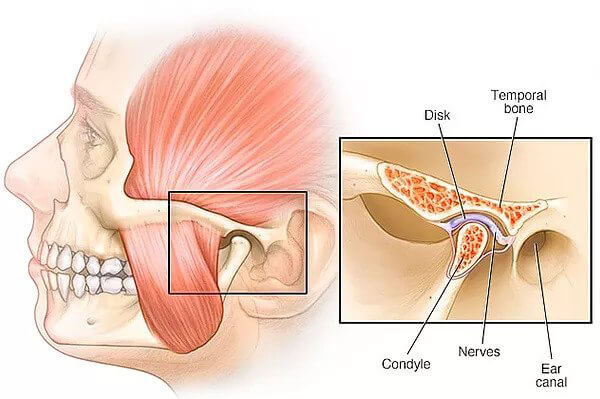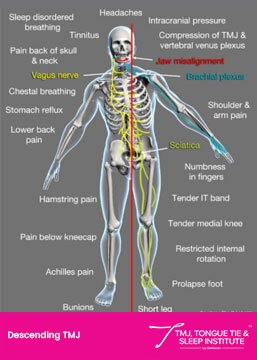



Place the tongue just behind the upper teeth on the roof of your mouth and gently try opening your mouth/jaw without moving the tongue.
Place the thumb below your chin, gently open your mouth as you work against the resistance from your thumb.
Cross your arms across your chest (one hand on each shoulder). Slowly stretch your neck backwards. Now, move your neck to the left, hold the position for a few seconds and switch sides.
Some of the preventative measures to lower the risk of TMD is practising good posture and relaxing the jaw muscles to reduce jaw stress & tension. Consulting with a specialist will also help you discern whether any jaw or bite issues need to be rectified.
Avoid activities that contribute to TMD:
Chronic gum chewing
Clenching your jaw
Chewing on ice or pens
Poor posture
Also, be mindful of excessive stress and anxiety, as they can contribute to the above activities.
Below is a list of foods to avoid while experiencing TMJ pain:
Chewy Foods: These types of food often require continuous chewing motion of the jaw, which can cause TMJ pain. The foods include chewing gum, caramel, chewy pieces of meat and sticky candies.Fatty Foods: Foods like red meat, fried foods, trans-fat, and pastries can increase inflammation in the body, causing TMJ pain. Also, avoid large chunks of food, which can overwork your jaw.
Some types of foods to include in your diet to lower the risk of TMD are:
Anti-inflammatory foods: A rich diet of anti-inflammatory foods like beans, fruits, vegetables, whole grains, healthy fats, and fish can lower the risk of TMD. Ginger, garlic, turmeric and onions are a few other anti-inflammatory foods. Also, dairy-free diets can reduce inflammation.
Copyright ©2025 TMJ, Tongue Tie and Sleep Institute. All Rights Reserved.
WhatsApp us
Let Us Know How Can We Help You!
At our institute, we take pride in providing complete care for issues related to tongue tie and TMJ. To enhance your quality of life, we treat a range of ailments with state-of-the-art technology and expert care. If you’re searching for an effective tongue-tie operation option or a TMJ specialist in India, you have arrived at the right place.
A tongue tie operation or tongue tie surgery is a life-changing procedure that not only restores tongue mobility but also has a full body effect. While most people associate tongue tie with breastfeeding difficulties in infants, it can also affect speech, breathing, posture, dental health, and sleep patterns in older children and adults. By undergoing this minimally invasive fascia release procedure, patients often experience immediate improvements in functionality and overall well-being.
For individuals considering tongue tie surgery, the benefits are far-reaching:
The Temporomandibular Joint (TMJ) that is your Jaw Joint has a significant impact on one’s quality of life, as they leave the person feeling exhausted and irritable. It not only affects essential functions like chewing, speaking, yawning but also affects one’s posture, breathing and sleep. As a leading TMJ specialist in Mumbai, we offer comprehensive diagnostics and personalized treatment plans to address your unique needs.
An integral part of our treatment protocols is myofunctional therapy. Exercises used in this therapy help to strengthen and coordinate the muscles of the tongue and face. Whether you’re undergoing a tongue tie operation or being treated for TMJ issues, myofunctional therapy plays a pivotal role in ensuring lasting outcomes.
Expertise and complete treatment are essential for treating TMJ issues or tongue tie. Whether you’re searching for the best tongue tie surgery options or a trusted TMJ specialist in Mumbai, we ensure personalized care and transformative results. Don’t let these conditions stop you—reach out to us today to book your consultation and start your journey toward better health and wellness.